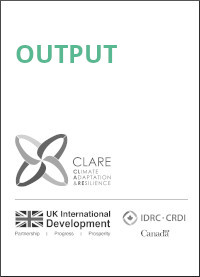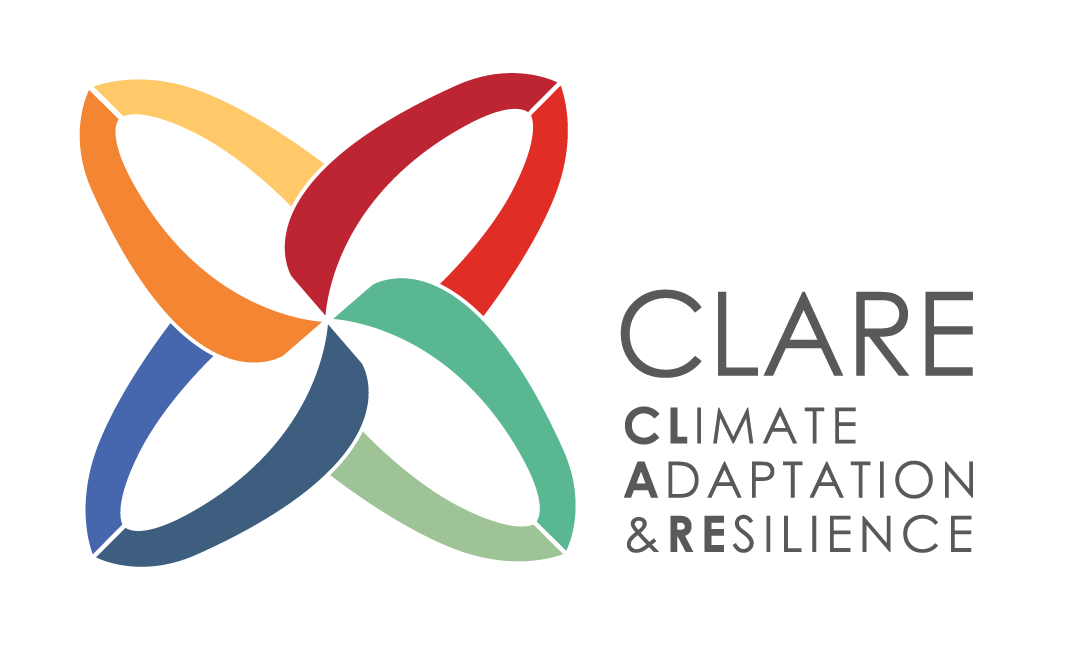Pan-African and transdisciplinary lens on the margins: Tackling the risks of extreme events (PALM-TREEs)
Introduction
This project addresses stakeholder and community needs across six countries to identify the consequences of extreme events as experienced by marginalized people. The project will extend beyond the characterization and modelling of physical anomalies (which consider extreme events in terms of their occurrence, intensity, and frequency) to examining when and why these events are considered “extreme” by the communities and how they contribute to their vulnerability. This knowledge will be integrated into the work of the local stakeholders in charge of preparedness and adaptation plans and into their inclusive design and implementation. The hypothesis is that more inclusive implementation of these plans will contribute to reducing inequalities rather than perpetrating them.
Research will be on flooding in Kitui and Turkana counties in Kenya; the dynamics of heat stress and gender-based violence (and responses) in KwaZulu-Natal in South; the impact of flood, drought, and heatwaves on the agricultural productivity of women in Guider and Foumbot in Cameroon and Mbanza-Ngungu locality in the Democratic Republic of Congo; the impact of heat stress on the health and livelihoods of communities in informal settlements in Lagos, Nigeria; and the impacts of droughts, floods and water management on diverse communities in the Volta River basins and Accra in Ghana.
Context
According to the IPCC Sixth Assessment Report, extreme climatic events have been observed in all inhabited regions, with many experiencing unprecedented consequences, particularly when multiple hazards (floods, droughts, and heatwaves) occur at the same time or within the same space. The impact of repeated and overlapping climate shocks is growing. Weather-related extreme events displaced over 20 million people each year and impact the lives of many more. Consequently, the frontier of adaptation research is moving beyond response to single, one-time shocks to instead address compound and cascading climate risk.
Across Sub-Saharan Africa, climate risk interacts with multiple layers of vulnerability and security risks to create complex hazards. Communities face immediate and long-term consequences from extreme events, including lingering impacts on mental health, well-being, life satisfaction, cognitive performance, and inequality among exposed populations. Limited access to resources, aid, and services during and after climate shocks push communities towards the margins of society and the limits of their ability to adapt. This project seeks to transform power relations that exacerbate disparity and injustice by tackling different forms of vulnerability that interact in complex risk and future shocks. The project considers how climate risks, socio-political contexts, and collaborating institutions vary between countries.
Approach and Methods
Key to the project approach is moving beyond physical description of climate to provide tools that effectively translate climate science into the implications for people and practitioners. Underpinning this approach are research questions on how the impacts of extreme events (floods, drought, and heat waves) differ depending on gender and social identities, how these impacts vary across regions, how transferable are solutions across different parts of Africa, and how to create information tools that enable stakeholders and communities to support equitable resilience.
The project is structured around four interconnected work packages covering the practical consequences of climate extremes, the physical drivers of such extremes, identifying climate-resilient solutions, and strengthening the capacity of early-career professionals. Methods involve drawing data from existing demographic and health surveys and conducting new participatory data analysis, mapping, and focus groups (‘living lab’ methodology), qualitative comparative analysis (QCA) and multilevel modelling to create ‘risk narratives’, as well as combining local weather observations and satellite data into climate modelling in order to refine decadal prediction and coupled model intercomparison of historic, present-day, and future climate.
Expected Results
Expected results will be tailored to each of the six country contexts and include:
- “Risk narratives” which are accessible language descriptions of the consequences for different people under distinct climate scenarios. These outputs will be based on differential experiences of historical events rather than the typical use of narratives to explain future risks. The purpose is to inform communities and practitioners in pursuing more equitable and inclusive climate adaptation.
- Process-based diagnostics to improve evaluation of climate models in Africa and forecasts used by national meteorological services. Diagnostics created by the project promise to “reframe” scientific understanding of the physical drivers of compound risks posed by multiple climate extremes occurring in short succession and their impact on marginalized people.
- Indicators of transformational change – the project will advance methods to better measure changes in vulnerability and resilience to hazards, and how these differ depending on gender and social identities.
- Cross-sectoral networks: the project will expand an existing network to include other institutions, and practitioner organisations, identifying and piloting climate-resilient solutions identified through such engagement.
- Open Access (OA) Data Repositories: The project will contribute to at least two high visibility and open repositories. Data won’t be simply shared, but curated and published, following anonymization and other ethics and safeguarding procedures. There will be dedicated journal publications (at least 2) accompanying them and facilitating their use.
Photo Credit: IDRC/Karla Gachet
Lead Organizations
CLARE Partners
Contacts
Updates
CLARE projects strengthen drought resilience through locally led adaptation (LLA)
CLARE community champions Southern leadership at COP30
Fostering New Capacity Strengthening Approaches and Gender Equality and Inclusion in Adaptation Research
Explore CLARE Research Projects
Beyond the Checklist: Rethinking Gender, Justice, and Research in a Changing World
Climate adaptation and drought resilience go hand-in-hand
Responding to increasing hydrological extremes: the case of Lodwar floods (PALM-TREEs)
Influencing Climate Policies Through Research: Insights from the PALM-TREEs Project
Collaborative Insights: Transformative Lessons Learned by PALM-TREEs at the CLARExchange Forum in Lusaka
New thematic summaries unveil innovative research for climate adaptation and resilience
Empowering Local Communities: The Launch of PALM-TREEs in Limpopo
Roots of Resilience: The PALM-TREEs Project in Mbanza Ngungu, DRC
PALM-TREEs Project: Strengthening Agricultural Resilience in Cameroon
A Collaborative Approach to Climate Resilience and Onion Production in Cameroon
Stay Informed: Our Inaugural PALM-TREES Newsletter is out
Nancy Nabur: A Young Mother’s Experience as Enumerator in Turkana, Kenya
Read about research for impact approaches in CLARE in our first working paper
Co-creation for more inclusive adaptation and resilience research
Strengthening Resilience: Voices from the White Volta Basin
Strengthening drought resilience is effective climate adaptation
Building a Resilient Future: Key Insights from the Turkana Inception Workshop
Kwara State Inception Workshop: Engaging Communities for Climate Resilience
Engaging Stakeholders in the Lagos Case Study
Strengthening Kitui’s Resilience to Climate Change
Ensuring gender equality and inclusion in climate research
Introducing the CLARE research portfolio
Climate extremes and vulnerable communities: Empowering marginalized groups in Accra
Advancing gender integration in climate policies and sustainable solutions through research in Central Africa
COP28: Fostering awareness and research on climate extremes and the marginalised in Africa
CLARExchange Forum 2023: Supporting Collaboration and Learning Across the CLARE Research Portfolio
A pan-African and transdisciplinary perspective on people living on the margins and coping with extreme weather events in Central Africa
IDRC and UK announce new research projects to boost climate resilience in Global South
Official Launch of the PALM-TREES Project
Outputs

Critical role of LLA in drought resilience

Functional GEE algorithm capable of processing
assessing satellite imagery products for accurate mapping of frequently flooded areas during flash flood events in Lodwar Town

Enhanced detection of flash flood source areas in Lodwar Town through remote sensing
machine learning integration

Recommendation of the most suitable satellite imagery product for flash flood inundation mapping in the Turkwel
Kitui rivers

Impact of environmental shocks due to climate change on intimate partner violence : a structural equation model of data from 156 countries

Curtailing flash flood impacts on vulnerable communities in data scarce regions through the utilization of digital innovation


